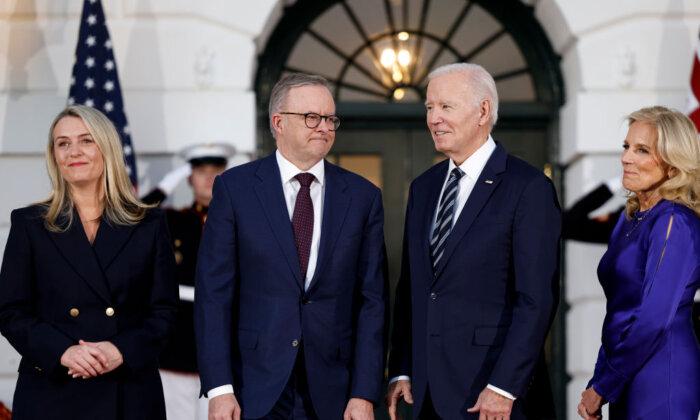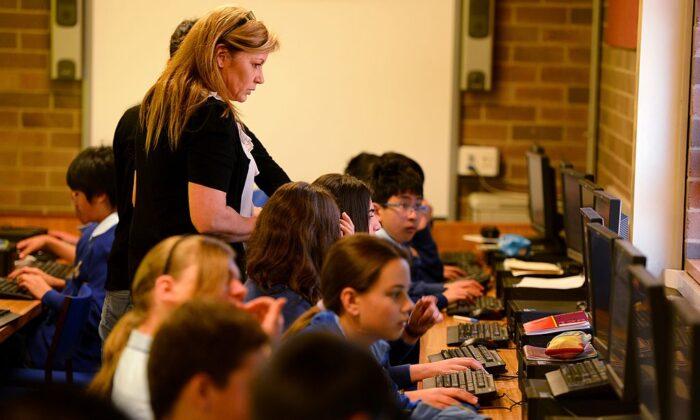Prime Minister Anthony Albanese announced an extra $2 billion (US$1.26 billion) towards doubling the Critical Minerals Facility’s capacity to finance mining and processing projects on Oct. 25.
The expansion takes the government’s resource investments to $6 billion, bolsters Australia as a world-leading provider, helps the transition to net zero and supports more jobs, opportunities, skills, technology and the economy.
Critical minerals are the essential building blocks for a clean energy future and transition. They include cobalt, lithium, manganese and rare earths.
China dominates the sector, with about 63 percent of the world’s rare earth production.
Mr. Albanese said the nation’s critical mineral supply is vital to Australian and United States production.
“Australia is committed to building sustainable and secure critical minerals supply chains with the United States. This is central to building a clean energy future and delivering economic growth,” he said.He said the government was committed to the nation becoming a “renewable energy superpower” and harnessing “critical minerals at home is crucial to achieving this.”
“Australia is ideally positioned to provide responsibly-produced and processed critical minerals to demand,” he said.
“What we are doing here is providing what’s needed.”
Australia has an abundance of critical minerals, and they are used in products like batteries, wind turbines, solar panels and electric vehicle parts. They are also needed for defence technology and devices like mobile phones.
Mr. Albanese and Resources Minister Madeleine King announced the expansion surrounding Australian and U.S. industry leaders after the Australia-United States Taskforce on Critical Minerals inaugural meeting.
Ms. King said the road to net zero runs through Australia’s resources sector.
She said the government supported “de-risk investment” in the critical minerals sector. Expanding is a cornerstone of that support, “providing finance to strategically significant projects.”
“Coupled with our support, we are well positioned to be a world-leading critical minerals provider, including rare earth elements, and to support global efforts in clean energy transformation,” she said.
“Australian critical minerals projects are vital to ensuring the world has a stable, reliable materials source to power the energy transition,” she said.
“Global demand for critical minerals needed for electric vehicles and battery technologies is increasing as the world moves to decarbonise, and Australia is key to meeting this demand.”
Meanwhile, the expansion supports the Critical Minerals Strategy 2023-2030.

Opportunity to Consider Greater Alignment, Policy Advocates says
The Business Council of Australia (BCA) welcomed the critical minerals sector expansion.“Importantly, it aligns with the significant interest by the United States in what Australia has to offer as a reliable partner in its supply chain as we decarbonise our economies,” BCA Chief Executive Bran Black said.
“The United States has 50 minerals on its critical minerals list, and Australia has 26. There is an opportunity to consider greater alignment, and in this regard, we are pleased the federal government is finalising its review of Australia’s critical minerals list.
“We can see this as a win-win for both countries and an enormous opportunity for Australian businesses.”
Further, he called for a goal to drive more significant investment in essential mineral projects, including from the United States.
Western Australia Leads The Way
Meanwhile, during Mr. Albanese’s trip to America to meet with U.S. President Joe Biden, he is expected to discuss three relationship pillars: defence, including the AUKUS arrangements; economics, including the free trade agreement; and climate change and clean energy, including the Critical Minerals Compact, signed in May.While in the United States, he wrote in an op-ed, “This week in Washington, we have started building a stronger future.”
With abundant supply of critical minerals available in Western Australia (WA), Mr. Albanese said his government was working to expand Australia’s role in the critical mineral supply chain with WA at the forefront.
“The West will help us win the future,” he said. “Since day one, backing WA to win in the world has been central to our agenda.”
“Thanks to WA, we are the world’s largest supplier of lithium, the fourth largest supplier of cobalt and the third largest of rare earths.
“We have shovel-ready projects ripe for investment.
He added that Australia was a stable democracy with a skilled workforce with great expertise in the field.
“In order to become a nation that stands on our own two feet, we have to make things here,” Mr. Albanese said.
“It’s important we have a future built in Australia.”
He said the expanded Critical Minerals Facility would allow Australia to invest in WA plans like Liontown Resources’ Kathleen Valley Lithium Project, which is expected to supply lithium oxide concentrate and Tantalum Pentoxide, a valuable material used in electronic manufacturing.
Further, the government could support projects that build “onshore processing and refining” while drawing in like-minded U.S. investments.
“And at every step along the way, one of the most crucial ingredients will be WA, driven by companies such as Lynas, Iluka, and Liontown Resources,” he said.
Liontown Resource’s Managing Director and CEO Tony Ottaviano said the battery minerals company “is powering ahead on all fronts, and our flagship Kathleen Valley Project is now less than 12 months from first production” on Aug. 7.
“We will better understand operating cost estimates and working capital requirements,” Mr. Ottaviano said.
“The underlying fundamentals and long-term outlook for lithium remain sound.”







